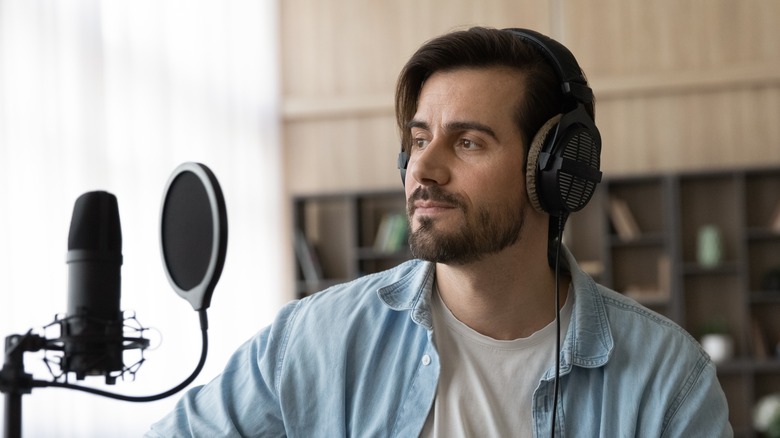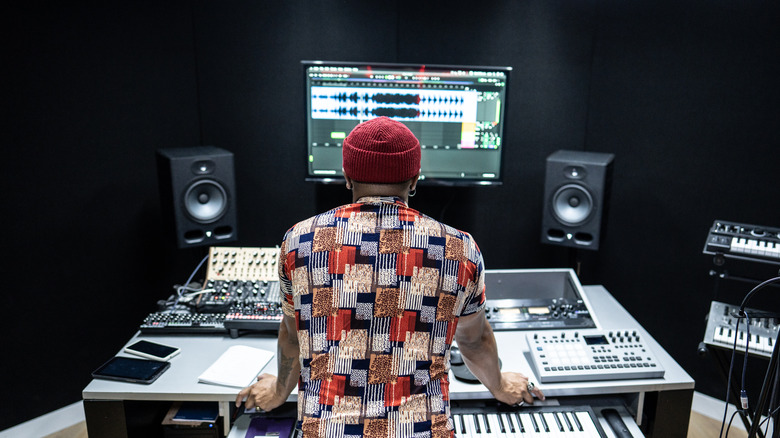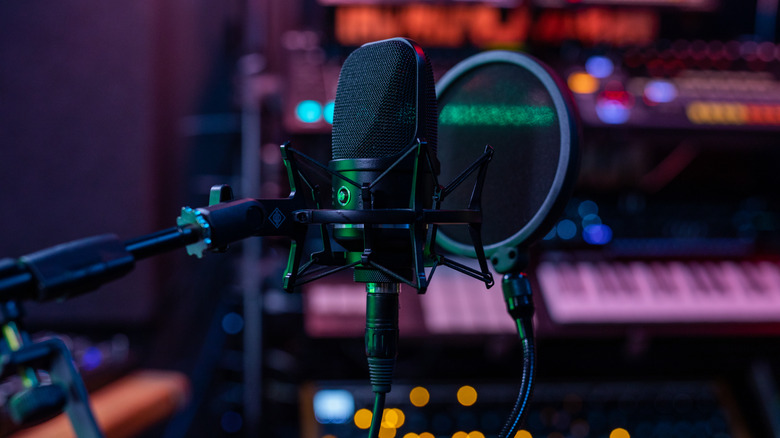Auto-Tune Vs. Pitch Correction: What's The Difference?
If you've ever been listening to a piece of music anchored by a singer and thought, "These vocals sound Auto-Tuned," you're probably wrong and right at the same time. Popular music today undergoes a very different recording process than it did even a few decades ago, and digital audio tools give producers and engineers full control over every element of a song, including the vocals. That control has enabled artificial voice correction, known as vocal tuning, allowing any minor imperfection made by a singer to be erased with the touch of a few buttons. Most sung vocals are indeed being processed to make them sound better. While some songs are processed to make the manipulation obvious, many take a much more subtle approach that renders the corrections almost entirely inaudible.
However, it is a misnomer to call all such vocal tuning "Auto-Tune." That term refers to one of many such products on the market, and Auto-Tune is far from the only product that aims to polish imperfections away from a vocal. So, what studio magic is actually being performed on your favorite artist's voice? And what makes Auto-Tune different from other forms of vocal tuning? The answer is the difference between automation and manual control.
What is pitch correction and why is it used?
Vocal tuning is all about correcting errors in a sung recording, especially missed, flat, or sharp notes. Human voices are, like everything else about us, imperfect, and it is extremely rare for even a highly trained and talented singer to hit every note precisely. Vocal tuning software allows for those imperfections to be removed. Along with other techniques — for example, comping, in which multiple takes of the vocal are cobbled together — the end product is a song without any noticeable vocal flaws.
Auto-Tune is a brand name for a piece of software made by Antares, which, like Kleenex, is often used as a catch-all to refer to real-time vocal tuning. It is common for people to use the term "Auto-Tune" to refer to all such vocal tuning, but in fact, the Auto-Tune and similar products are rarely used on natural-sounding sung vocals because, although easier to use than competing products, they lack the fine control provided by other technologies and can easily create a robotic tone that most singers and audio engineers prefer to avoid.
But that doesn't mean modern music is devoid of vocal manipulation. In fact, most popular music has some kind of vocal tuning applied. So, what exactly is being done to make pop stars sound pitch-perfect? Let's explore further.
Real-time vs. manual pitch correction
There are two main types of vocal tuning that are applied in modern music production: real-time tuning and manual tuning, which is also known as note-based audio editing. In a real-time paradigm, the vocal is run through a piece of software that automatically adjusts each note on the fly, attempting to pull it into a key. The most prominent such piece of software is the famed Auto-Tune. However, because real-time processing reacts uniformly on the fly, the results often sound robotic.
The latter method of manual or note-based vocal tuning is often preferred by singers who do not wish for pitch correction on their vocals to be obvious. It involves software that allows the user to bring each note into alignment, one by one, so that every moment can be shaped individually. While this is far more labor-intensive, it is also far more precise. The most popular manual tuning programs, such as Celemony Melodyne, even allow the pitch to be adjusted independently of vibrato and tone.
However, while real-time pitch correction like Auto-Tune is known for the robotic sound associated with it, both it and manual correction tools will create a robotic sound if the vocal is manipulated too much. Although not true across the board, recorded music with sung vocals usually has manual tuning applied with a program like Melodyne, whereas live shows in which the singer has their vocals augmented will necessarily be using real-time correction with a program like Auto-Tune.
Auto-Tune is a specific piece of software
As we've mentioned, Auto-Tune is a brand name belonging to a specific piece of software made by Antares. It works by processing a vocal signal in real-time, pulling each moment of the recording into key. It was popularized by artists such as T-Pain, who realized that applying Auto-Tune in large amounts created an appealingly robotic sound that set their music apart.
Meanwhile, other tools exist that do the same thing as Auto-Tune, and many more that simply have an Auto-Tune-esque feature built into more robust vocal processing software. For example, iZotope VocalSynth 2, a vocal manipulation suite, has a real-time pitch correction tool in addition to chorus, reverb, and other vocal tools. Regardless of which program is being used, many people nonetheless colloquially refer to real-time vocal tuning as Auto-Tune. However, the most recent versions of Auto-Tune also include a note-based vocal editor, so you wouldn't technically be wrong to use Auto-Tune as a catch-all for vocal tuning, even if a different software was actually used.



